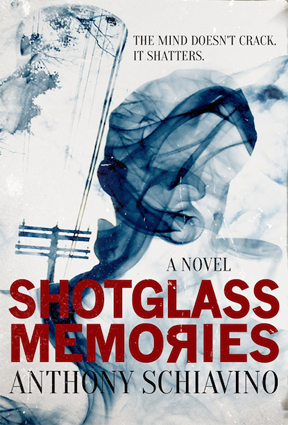 The Wolves Are At The Door
The Wolves Are At The Door
If David Fincher directed Bogie and Bacall in a Hitchcock romance, you would have Shotglass Memories. It’s a mixed drink explained in different ways, through different genres, but I’ll let you come to realize that I’ve eviscerated you emotionally by the time you get to the coda.
Before that happens, I need to earn your emotional attachment. I need to earn your trust, before I throw it through the plate glass and onto the pavement.
You don’t know Joe Sinclair or Kelsey Halliday. You don’t know Deargood, or Norah, or Gabriel. You’re on the outside looking in. You’re not inside my head, or theirs. From the gate, you don’t know the intimate details of what makes them tick; what keeps them up at night or what arouses their souls. You’re a voyeur who has a condition. An urge. I’m here to feed that urge.
But why should you care what happens to any of them at the start, let alone at all?
When I put them through Hell, or have them fall in love, I want you to feel it. I don’t want to tell you to feel it. I want you to feel the dark embrace of the page.
When I break Joe I want you to feel it at the back of your throat.
I want you to feel the chill off the ocean when Norah stands half-naked, covered in blood, crying out for somebody to open the door. I’ll paint the broad strokes and you fill in the rest. Hitchcock didn’t have to show everything.
Because you, the voyeur, can picture far worse.
 I want you on a first name basis, and in some cases last name, with these people. If they’re just characters, that’s not good enough. My wife yelled at me halfway through a chapter, “You better not kill Kelsey!” Another reader told me they didn’t like part of another because of what happens to Joe. Not because of how it was written or the scene itself. Just that it happened to him and she liked him too much for that turn.
I want you on a first name basis, and in some cases last name, with these people. If they’re just characters, that’s not good enough. My wife yelled at me halfway through a chapter, “You better not kill Kelsey!” Another reader told me they didn’t like part of another because of what happens to Joe. Not because of how it was written or the scene itself. Just that it happened to him and she liked him too much for that turn.
Joe is a soldier returning from the war, living with what we now call PTSD, and dealing with life. Then the bodies start washing up and the wounds on his hands don’t match the ones in his head.
Coming out of two wars and an economic downturn, the Reds lurked inside every open window. Nukes could obliterate us at any moment. Where have we heard that before?
There is this romanticized view of how we think of the 1950s. How perfect it all was “then” and how much better “then” was. The reality is somewhere between the broadcast atomic family and the ink of lurid paperbacks. “Then” never existed. That memory, your memory, is blurred and poisoned by a fifth of Kentucky. Or REDACTED TEXT.
It’s your Shotglass Memory. Smashed together and shattered. Bullet-riddled, spider-webbed and fractured. The entire population didn’t talk in slang and go to the hop. More than just teenagers in hot-rods lived during the era. They lied to you. The wolves are at the door.
Two lovers try to make a go in a bad situation. Their vision fogs up around the edges and neither one gives a damn as they embrace the loaded gun wedged between them. Stripped down to their core, naked physically and mentally, before the other shoe drops.
That’s when the past catches up to them like a freight train through the heart.
Shotglass Memories is available now at Amazon.





The Wolves Are At The Door (Column) | A. Schiavino
November 3, 2015 - 7:02 PM